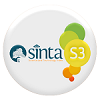REFORMATION IN LEARNING HISTORY
Abstract
Keywords
Full Text:
PDFReferences
Abdulgani, R. (1963). Penggunaan Ilmu Sejarah. Bandung: Prapanca,
Abdullah,T. (2001). Nasionalisme dan Sejarah. Bandung: Satya Historika.
Ali, R. M. (1963). Pengantar Ilmu Sejarah Indonesia. Jakarta : Bhratara.
Anderson, O. W. & David K. (2001). A Taxonomy for Learning, Teaching and Assessing. New York: Longman Inc.
Beyer, B.K. (1979). Inquiry in the Social Studies Classroom: A. Strategy for Teaching.Colombus OH: Charles E.. Merril Publ.Co.
Budhisantoso, S. (1985). “Kesadaran Sejarah dalam Pengembangan Kebudayaan Nasional Indonesia”, dalam Pemikiran tentang Pembinaan Kesadaran Sejarah. Jakarta: Debdikbud Direktorat Sejarah dan Nilai Tradisional.
Cleaf, D.W.V. (1991). Action in Elementary Social Studies. Boston: Allyn and Bacon.
Ellis, A.K. (1977). Teaching and Learning Elementary Social Studies. London: Allyn and Bacon Inc.
Gunning, D. (1978). The Teaching of History. London : Croon Helm.
Joyce, B., Marsha W. and Calhoun. (2009). Models of Teaching. Boston: Pearson Education Inc.
Kartodirdjo, S. (1990). “Fungsi Sejarah dalam Pembangunan Bangsa, Kesadaran Sejarah, Identitas dan Kepribadian Nasional”, Seminar Nasional V Sub Tema Pengajaran Sejarah, Jakarta: Depdikbud Direktorat Sejarah dan Nilai Tradisional Proyek Inventarisasi dan Dokumentasi Sejarah Nasional.
__________ (1993). “Sejarah Nasional dan Pembangunan Bangsa”, Pendekatan Ilmu Sosial dalam Metodologi Sejarah, Sartono Kartodirdjo. Jakarta : PT. Gramedia Pustaka Utama.
__________ (1993). Pendekatan Ilmu Sosial dalam Metodologi Sejarah. Jakarta: Gramedia,
Klooster, H.A.J. (1984). Bangsa Indonesia Menulis Sejarahnya Sendiri. Terjemahan Suhardi.Surakarta: Jurusan Sejarah Fak. Sastra UNS, 1992,
Kohlberg, L. The Psychology of Moral Development. San Francisco: Harper & Row Publisher.
Madjid, N. (1997). “Masyarakat dan Kesadaran Sejarah” Makalah Konggres Nasional Sejarah 1996.Jakarta: Debdikbud RI.
Marsh, C. & Stafford,K.,(1988). Curriculum: Pactice and Issues, Roseville, Australia : McGraw-Hill.
Metcallf, L. E. (1971). Values Education: Rational, Strategy, and Procedure. Washington DC : NCSS.
Meulen SJ.,W.J. van der Ilmu Sejarah dan Filsafat. Yogyakarta : Kanisius, 1987.
Permen Diknas Nomor 22 tahun 2006
Reigeluth, C. M. (1983) Intructional-Design Theories and Model: An Overview of their Current Status. London, Lawrence Erlbaum Associates Publisers.
Rest (1983). “Morality”, in Husen (Ed), Handbook of Child Psychology, Vol 4. New York: Wiley.
DOI: https://doi.org/10.17509/historia.v11i2.12329
Refbacks
- There are currently no refbacks.
Copyright (c) 2024 Historia: Jurnal Pendidik dan Peneliti Sejarah
INDEXED
TOOLS

This work is licensed under a Creative Commons Attribution-ShareAlike 4.0 International License.
Alamat Redaksi: Gedung Numan Soemantri, FPIPS UPI, Departemen Pendidikan Sejarah, Lantai 2, Jl. Dr. Setiabudhi No 229 Bandung, 40154






